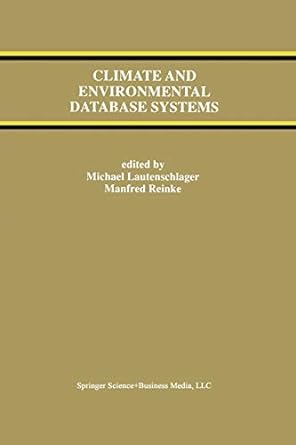
CASE PROBLEM 1 : B I G TEN EXPANSION From 1946 to 1990, the Big Ten Conference consisted of the University of Illinois, Indiana University, University of Iowa, University of Michigan, Michigan State University, University of Minnesota, Northwestern University, Ohio State University, Purdue University, and University of Wisconsin. In 1990, the conference added Pennsylvania State University. In 2011, the conference added the University of Nebraska. In 2014, the University of Maryland and Rutgers University were added to the conference with speculation of more schools being added in the future. The file BigTenExpand contains data on the football stadium capacity, latitude, longitude, endowment, and enrollment of 59 National Collegiate Athletic Association (NCAA) Football Bowl Subdivision (FBS) schools. Treat the 10 schools that were members of the Big Ten from 1946 to 1990 as being in a cluster and the other 49 schools as each being in their own cluster. 1. Using Euclidean distance to measure dissimilarity between observations, determine which school (in its own cluster of one) that hierarchical clustering with complete linkage would recommend integrating into the Big Ten Conference. That is, which school is the most similar with respect to complete linkage to the cluster of ten schools that were members of the Big Ten from 1946 to 1990 ? 2. Add the single school identified in (1) to create a cluster of 11 schools representing a hypothetical Big Ten Conference. Repeat the calculations to identify the school most similar with respect to complete linkage to this new cluster of 11 schools. 3. Add the school identified in (2) to create a cluster of 12 schools representing a hypothetical Big Ten Conference. Repeat the calculations to identify the school most similar with respect to complete linkage to this new cluster of 12 schools. 4. Add the school identified in (3) to create a cluster of 13 schools representing a hypothetical Big Ten Conference. Repeat the calculations to identify the school most similar with respect to complete linkage to this new cluster of 13 schools. Add this school to create a 14-school cluster. 5. How does the hypothetical 14-team cluster created in (4) compare to the actual 14-team Big Ten Conference? For both the hypothetical 14-team Big Ten Conference and the actual 14-team Big Ten Conference, compute the cluster centroid, the distance from each cluster member to the cluster centroid, and average distance between the observations in the cluster. What do you observe when comparing these two clusters? Which cluster has the smaller average distance between observations? Is this surprising? Explain







